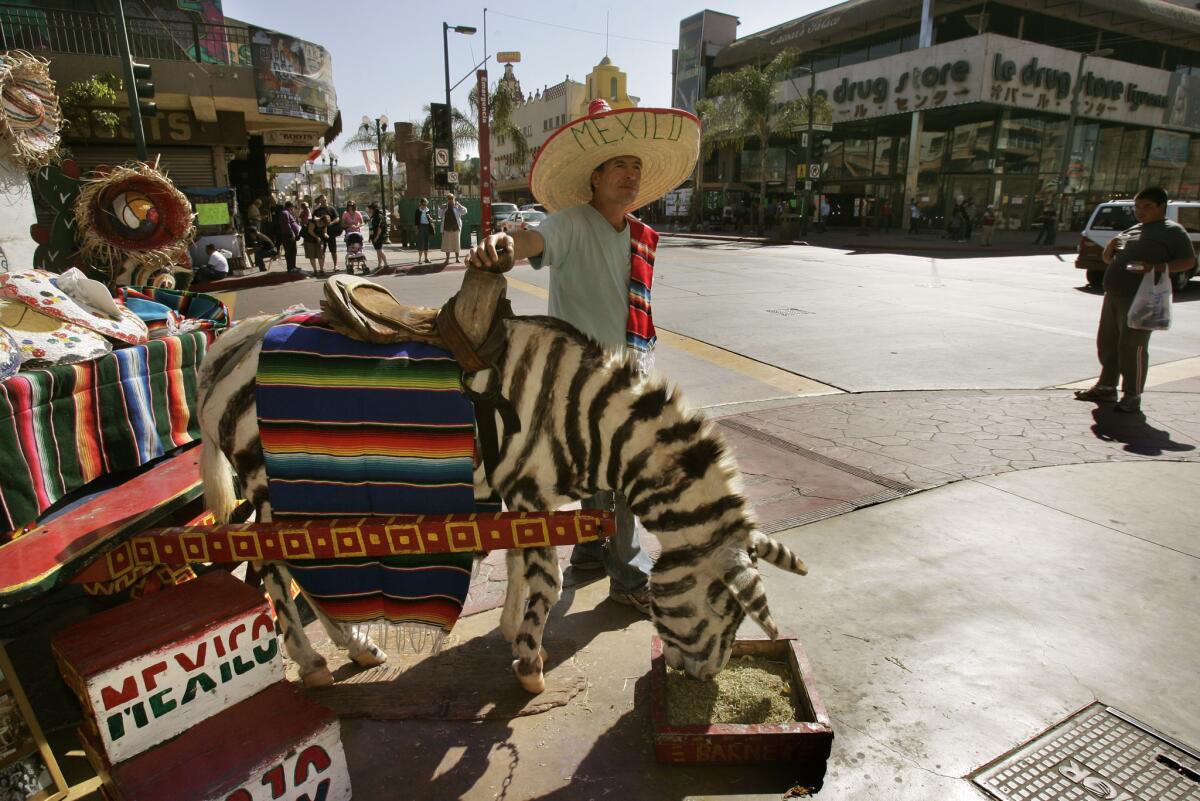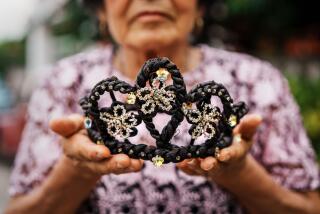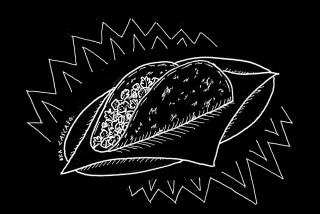From the archives:: How the zonkey got its stripes: Long before Instagram, Tijuana’s tourist donkeys were camera-ready

Eduardo Perez waits for tourists with his burro named Barney, painted like a zebra, on Avenida Revolución in Tijuana. The burro cart photo-op tradition dates back to the 1930s.
It is Tijuana’s most prominent touristic icon: the “zonkey” -- a donkey painted with zebra stripes and made available for souvenir pictures along the party strip of Avenida Revolución. But who came up with the idea? And why zebra stripes?
In doing research for my recent series on the expanding Tijuana arts scene, I stumbled on the answer in the Los Angeles Times archives.
SIGN UP for the free Classic Hollywood newsletter >>
A 1978 story by the late Times journalist Laurie Becklund explained it all. The burro cart as tourist spectacle, she reported, started in the 1930s:
“The burro cart owners say the idea for the tourist attractions came shortly after 1935, when gambling was declared illegal in Mexico and the famous Agua Caliente Casino in the valley southeast of downtown was closed.
“The casino had two plain burro carts at the entrance that had appealed to tourists. As Americans began visiting Revolución in the aftermath of the casinos, a few enterprising young men brought wooden carts to the shopping area as backdrops for souvenirs. The photographers soon learned to transform the plain carts into what tourists considered to be Mexico’s typical form of transportation.
“Mexican scenery was painted into a background. Prickly pear cactus blossomed on either side of the painting to frame the picture (thereby improving the artistic quality of the photograph, they said). Serapes were spread over the cart seats.”
The carts became so popular that, by World War II, a union of burro cart owners was formed, and members were each assigned a specific street corner to work.
It was sometime during or in the wake of this period that the zebra stripes also emerged. Like most things to do with the burro cart, it turns out they had everything to do with the aesthetics of photography -- which would have then been black-and-white or sepia.
As Becklund reported in ‘78:
“There are, among the 22 burro cart owners of this avenue, those who say it was ‘el viejito’ Vega (the little old man Vega) who first put the burro before the cart here and painted her Peacock-brand black. But Vega died years ago, they say, and is not around to defend his claim.
“Alberto Sanchez Ibarra, 66, who has had his cart at the corner of Revolución and 2nd Ave for 36 or 37 years, says it was his brother Prudencio, now long retired, who first painted the burro.
“‘We took pictures of the burrito but because she was white, she didn’t show up in the pictures,’ he explained. So Prudencio decided she needed some paint and he bought the dye. I helped him paint her.’
“Even those who say it was Vega who deserved credit for the innovation agree that the technical quality of the photography -- and certainly not any desire to exoticize the burro with stripes -- is the only reason for the repeated dye jobs.”
The donkeys of Revolución therefore bear stripes so that they might better render in the pictures. Instagram should be grateful for that.
Find me on Twitter @cmonstah
ALSO
Series: Tijuana’s Generation Art
The pioneer: Arturo Rodriguez, La Caja Galeri / Making a Tijuana art scene built to last
More to Read
The biggest entertainment stories
Get our big stories about Hollywood, film, television, music, arts, culture and more right in your inbox as soon as they publish.
You may occasionally receive promotional content from the Los Angeles Times.







